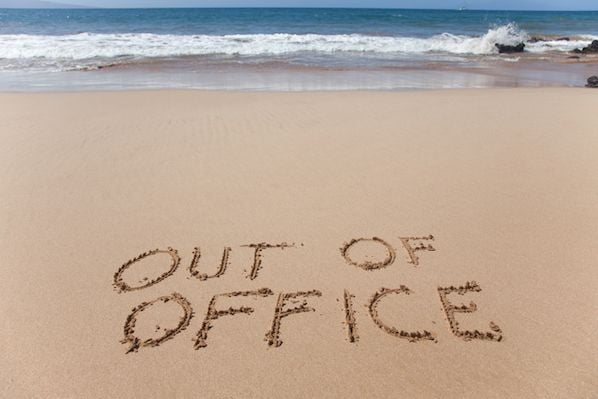What Is a Cost Center?
A cost center is a department or function that costs your business money to run but doesn't generate any direct revenue. These centers typically consist of administrative, customer service, and internal support roles where employees aren't focused on marketing or sales, but rather supporting these operations to ensure a positive customer experience.
Almost every business has at least one or two cost centers. For example, if you have a billing department, you have a cost center. A billing team doesn't directly generate revenue for your business, but it's still needed for your company to function properly. Without it, customers wouldn't know where to submit payments and your business wouldn't have a formal way of collecting them.
Cost centers can also be individual roles, rather than full-fledged teams. A good example is a custodian or IT person who's on your company's payroll but doesn't contribute to marketing or sales strategies. Again, these people may not be nurturing leads and closing deals but they're just as important as any other employee.
While cost centers may not generate immediate revenue, they're still vital to customer success and the success of your organization. Even though they cost money to run in the short-term, they usually add value to the customer experience over time — like in the billing example above.
Read on to learn about how cost centers work and why they're beneficial to your business.
How Cost Centers Work
1. Assign a Cost Center Manager.
Most cost centers will have a manager in charge of tracking and reporting expenses. If the cost center is just an individual role, the employee may manage the expenses themself or it may be managed by their direct supervisor — depending on the role.
2. Determine a Budget for the Cost Center.
The purpose of creating a cost center is to understand how much a certain function or team costs to operate and whether that cost is worth the value the service or team provides. Once you know that, you can allot a budget to make sure it doesn't end up costing your business more than you expected. If your cost center is consistently going over budget, then you may need to reassess whether this function or team is adding enough value to your business in comparison to what it's costing you.
3. Establish a Purpose or Goal.
While your goal should always be to stay within budget, that shouldn't be the sole purpose of your cost center. After all, you don't want to just spend money for the sake of spending it. You should want to maximize the value of your cost centers to ensure they're providing the most return for what you're spending on them.
To do this, it helps to establish a definitive purpose or goal that your cost center can achieve. It good if this goal is metric-based or numerical, but it doesn't have to be. It only needs to be measurable and justify the costs that you're spending on this team or program.
4. Track Expenses Over Time.
When you identify a cost center, you should track its expenses over time. This will help you determine whether you're achieving your goals and if the cost center is indirectly adding value to the customer experience.
And, you never know when costs may rise or fall. A program that you were originally able to fund may not be possible anymore due to rising costs. If you don't have a way to track these expenses over time, you run the risk of spending money on a service or department that doesn't provide equitable value.
But, that's not the only reason to track the expenses of your cost centers. Read on for a few more advantages outlined in the section below.
Benefits of Cost Centers
Cost Centers Help Businesses Improve Customer Experience.
Cost centers may not generate immediate revenue, but they do improve customer experience over time.
Take a landscaper, for example. Your business might hire one to maintain the exterior of your building, but their work doesn't produce any direct revenue from customers. However, if you don't hire a landscaper and the plants outside your building start to overgrow, this can directly impact sales. Customers may see an untrimmed lawn and tall weeds growing outside the building and think that your company either can't afford to pay a landscaper or doesn't value its brand appearance.
Both aren't a good look for your business and can end up costing you sales over time.
Cost Centers Determine the Value of Service, Department, or Role.
Once you know the value of a cost center, it makes it a lot easier to determine whether your business needs it or not. For instance, if you notice a cost center isn't providing an adequate return, you can cut that program or team and reallocate those resources to another area of your business. That way, you can make sure all of your expenses are going towards services that your customers actually want, rather than guessing what functions you think they'll need and spending money blindly.
Cost Centers can Optimize Your Customer Loyalty Program.
One study found that the typical U.S. household is enrolled between 19 to 29 different customer loyalty programs. However, most households admitted that they only really use 5 to 12 of these programs regularly.
A customer loyalty program is another example of a cost center. If you have one, you can track its expenses to see if it's actually retaining customers. To do this, all you have to do is compare what you're spending on the loyalty program against the recurring revenue spent by customers that are enrolled in it. That way, you'll know how much profit your customer loyalty program is indirectly netting for your business.
Cost Centers Help Executives Report Expenses to Stakeholders
Investors will want to know what your business is spending money on. Cost centers come in handy here because adding their expenses together makes it easy to calculate total costs for your business. And, if you can separate cost centers from other types of costs at your company, you can clearly explain why your organization is spending money on services or personnel that may not be generating direct revenue.
Still not sure what a cost center is? Let's wrap things up by reviewing a few examples that may be found at your business.
Cost Center Examples
1. Customer Service Teams
Customer service teams are one of the most common examples of cost centers because it's their primary responsibility to ensure customer delight. These teams work closely with customers every day and make sure people are satisfied with their purchases. If a problem comes up, the service team is responsible for making sure the customer is happy and willing to return for another purchase.
2. Recruitment Office
A recruitment office helps you find the best people possible to work for your business. This department doesn't directly generate sales, but it does hire the people who will nurture and engage customers. The stronger this department is, the better your marketing and sales teams will be.
3. IT Departments
When employees have tech-related issues, most businesses will have an IT department where they can report equipment or software problems. This is a really important function for businesses because it keeps employees on track and properly equipped to meet their expected workload.
4. Project Managers
Project managers may oversee projects that produce revenue, but their work doesn't directly generate it.
Think of project managers like the architect for a building. They create the project's blueprints so the rest of the team can execute the plan. As a project manager, their job is to make sure employees are organized and understand timelines, goals, and challenges included in a specific project or campaign.
5. Human Resources
If your employees are unhappy, they're not going to do their best work. Your human resources department is responsible for making sure employees are happy and answers any questions or concerns related to your team's professional careers. This keeps employees motivated and helps you retain valuable talent that generates revenue for your business.
For more phrases to add to your customer service vocabulary, check out these customer service buzzwords.
Management
.png?width=112&height=112&name=Image%20Hackathon%20%E2%80%93%20Vertical%20(9).png)









